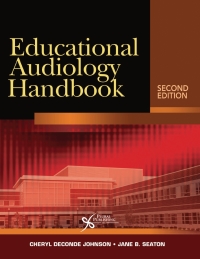
Educational Audiology Handbook.
Second Edition
Cheryl DeConde Johnson, Jane B. Seaton
Details: ebook
ISBN13: 978-1-63550-166-7
© 2012 | Available
PLURAL HAS MADE THE SECOND EDITION AVAILABLE AS AN EBOOK ON VITALSOURCE. CLICK THE VITALSOURCE BUTTON ABOVE TO PURCHASE THE EBOOK. PRINT COPIES OF THE SECOND EDITION ARE NOT AVAILABLE.
THE THIRD EDITION WILL BE RELEASED IN APRIL 2020 AND WILL BE AVAILABLE IN BOTH PRINT AND EBOOK FORMATS.
Educational Audiology Handbook is the gold standard text for school-based audiology in the field today. Providing blueprints for creating and maintaining high-quality programs and guidance to achieve full integration into a school staff, this text offers a roadmap for school-based audiology. Within this resource, you will find practice tools such as assessments, parent handouts, and legal and reference documents for the audiologist whose practice includes children.
New to the Second Edition
- Every chapter has been updated to reflect current research, technology, and legislation affecting the practice of educational audiology.
- Four new chapters covering classroom acoustics, counseling, early intervention, and education of the deaf and hard of hearing.
- Unique combination of topics not typically discussed in traditional pediatric audiology textbooks, including: amplification, FM amplification applications, functional hearing assessments, and central auditory processing.
- Extensive appendices contain legal and reference documents, forms, test protocols, handouts, and other materials pertinent for every audiologist whose practice includes children.
- Preface
- Foreword
- Section I
- CHAPTER 1 Educational Audiology: How Did We Get Here? Historical and Current Policy Perspectives
- HISTORICAL PERSPECTIVE
- GUIDING POLICIES OF THE TWENTY-FIRST CENTURY: YEARS 2000–2010
- SUMMARY
- SUGGESTED READINGS
- APPENDIX 1-A Comparison of Pertinent Areas of the Individuals with Disabilities Education Act
- APPENDIX 1-B IDEA 2004 Key Regulations Pertaining in Audiology and
- APPENDIX 1-C Comparison of Pertinent Part B and Part C IDEA Requirements Related to Children and You
- APPENDIX 1-D Summary of Regulations Pertaining to Persons Who Are Deaf and Hard of Hearing
- CHAPTER 2 Roles and Responsibilities of Educational Audiologists
- ROLES OF EDUCATIONAL AUDIOLOGISTS
- RESPONSIBILITIES OF EDUCATIONAL AUDIOLOGISTS
- ETHICAL CONSIDERATIONS
- EDUCATIONAL AUDIOLOGY SERVICE DELIVERY MODELS
- ESTABLISHING AND EXPANDING EDUCATIONAL AUDIOLOGY SERVICES IN THE SCHOOLS
- TRAINING FOR EDUCATIONAL AUDIOLOGISTS
- SUMMARY
- SUGGESTED READINGS
- APPENDIX 2-B Suggested Discipline Responsibilities for Identification, Evaluation, Referral, and Ser
- APPENDIX 2-C Educational Audiology Association: EDUCATIONAL AUDIOLOGISTS AND COCHLEAR IMPLANTS
- APPENDIX 2-D Educational Audiology Association: Minimum Competencies for Educational Audiologists
- APPENDIX 2-E Educational Audiology Association: RECOMMENDED PROFESSIONAL PRACTICES
- APPENDIX 2-H Educational Audiology Association: GUIDELINES OF THE CONSENSUS PANEL
- CHAPTER 3 Hearing Screening and Identification
- STATE MANDATES FOR HEARING SCREENING
- PURPOSES OF HEARING SCREENING AND IDENTIFICATION PROGRAMS
- RESOURCES FOR HEARING SCREENING AND IDENTIFICATION PROGRAMS
- SCREENING AND IDENTIFICATION CONCEPTS AND CONSIDERATIONS
- SCREENING AND IDENTIFICATION PROCEDURES
- SCREENING AND IDENTIFICATION PROTOCOLS
- SCREENING CHILDREN WHO CANNOT RESPOND TO TRADITIONAL TECHNIQUES
- SCREENING PERSONNEL
- SCREENING EQUIPMENT AND MAINTENANCE
- SCREENING ENVIRONMENT
- ORGANIZATION OF SCREENING AND IDENTIFICATION PROGRAMS
- FOLLOW-UP PROCEDURES
- RECORDKEEPING AND REPORTING
- DETERMINING THE EFFECTIVENESS OF HEARING SCREENING AND IDENTIFICATION PROGRAMS
- SUMMARY
- SUGGESTED READINGS
- APPENDIX 3-A Common Behaviors Frequently Exhibited by Children with Hearing Loss
- APPENDIX 3-B RECORD OF EAR AND HEARING PROBLEMS
- APPENDIX 3-C Basic Hearing Problems Questionnaire for Children with Developmental Delays
- APPENDIX 3-D Preparation Checklist for Preschool and School Hearing Screening
- APPENDIX 3-E Parent Notification and History Letter for Hearing Screening
- APPENDIX 3-F Individual and Class Hearing Screening Record Forms
- APPENDIX 3-G Hearing Rescreening Record Form
- APPENDIX 3-H Sample Teacher Notification of Screening Results
- APPENDIX 3-I Sample Parent Notification of Screening Results—Pass
- APPENDIX 3-J Sample Parent Letter To Refer Child for Further Audiological Evaluation
- APPENDIX 3-K Sample Medical Referral Letter and Return Medical Referral Form
- APPENDIX 3-L Sample Medical Referral Form
- APPENDIX 3-M Sample Database for Tracking Screening and Follow-Up
- APPENDIX 3-N State Hearing and Vision Screening Requirements
- CHAPTER 4 Assessment
- THE CROSS-CHECK PRINCIPLE IN EDUCATIONAL AUDIOLOGY
- BASIC ASSESSMENT OF HEARING LOSS
- MODIFICATIONS FOR SPECIAL POPULATIONS
- MONITORING HEARING SENSITIVITY
- ADDITIONAL AUDIOMETRIC INFORMATION AND FUNCTIONAL HEARING ASSESSMENT
- ASSESSMENT OF THE EDUCATIONAL EFFECTS OF HEARING LOSS
- COMMUNICATION OF ASSESSMENT RESULTS
- PERSONAL VULNERABILITY AND SAFETY
- SUMMARY
- SUGGESTED READINGS
- APPENDIX 4-A Audiology Case History
- APPENDIX 4-B Audiogram with Familiar Sounds
- APPENDIX 4-C Sample Audiogram
- APPENDIX 4-D Ordering Information for Selected Assessment Products
- APPENDIX 4-E Common Functional Outcome Measures for Children and Youth with Hearing Loss
- APPENDIX 4-F Adaptations for Assessing Children and Youth Who Are Blind or Visually Impaired
- APPENDIX 4-G Cumulative Record of Thresholds
- APPENDIX 4-H Phrase and Sentence Lists
- APPENDIX 4-I The Functional Listening Evaluation
- APPENDIX 4-J Classroom Participation Questionnaire
- APPENDIX 4-K C.H.A.P.S.: Children’s Auditory Performance Scale
- APPENDIX 4-L S.I.F.T.E.R.: Preschool, Secondary, Elementary
- APPENDIX 4-M L.I.F.E.: Listening Inventory For Education
- APPENDIX 4-N Relationship of Hearing Loss to Listening and Learning Needs
- APPENDIX 4-O Functional Assessment for Students Who Are Deaf and Hard of Hearing
- APPENDIX 4-P Fisher’s Auditory Problems Checklist
- APPENDIX 4-Q Evaluation of Children with Suspected Listening Disorders
- APPENDIX 4-R General Teacher Letter
- CHAPTER 5 Auditory Processing Deficits
- BASICS OF AUDITORY PROCESSING DEFICITS
- PARADIGM SHIFT: RESPONSE TO INTERVENTION MODEL FOR AUDITORY PROCESSING DEFICITS
- IMPLEMENTING A SCHOOL-BASED AUDITORY PROCESSING DEFICITS PROGRAM
- SUMMARY
- SUGGESTED READINGS
- APPENDIX 5-A Classroom and Auditory Behaviors Observation Tools
- APPENDIX 5-B Referral for Auditory Processing Assessment
- APPENDIX 5-C Auditory Processing Case History
- APPENDIX 5-D Auditory Processing Diagnostic Assessments
- APPENDIX 5-E Multidisciplinary Tests of Auditory Processing
- APPENDIX 5-F Auditory Processing Assessment Profile
- APPENDIX 5-G Accommodations and Modifications Checklist for APD
- APPENDIX 5-H Therapy and Remediation Techniques for Students with APD
- APPENDIX 5-I Compensatory and Metacognitive Strategies for Students with APD
- APPENDIX 5-J Classroom Acoustics and Instructional Interventionsfor Students with APD
- CHAPTER 6 Classroom Acoustics
- CLASSROOM ACOUSTICS AND AT-RISK CHILDREN
- PROPERTIES OF CLASSROOM ACOUSTICS
- EFFECTS OF CLASSROOM ACOUSTICS ON SPEECH PERCEPTION
- CLASSROOM ACOUSTICAL STANDARDS
- CLASSROOM ACOUSTICS RESOLUTIONS AND GUIDELINES
- MEASURING CLASSROOM ACOUSTICS
- ROLE OF THE EDUCATIONAL AUDIOLOGIST
- SUGGESTED READINGS
- APPENDIX 6-A Classroom Acoustical Screening Survey Worksheet
- APPENDIX 6-B Frequently Asked Questions About Classroom Acoustics
- APPENDIX 6-C Resources for Classroom Acoustics
- CHAPTER 7 Personal Hearing Instruments and Hearing Assistance Technology
- RATIONALE FOR PERSONAL HEARING INSTRUMENTS AND HEARING ASSISTANCE TECHNOLOGY
- RECENT TRENDS AND REGULATORY CONSIDERATIONS
- ASSESSMENT OF THE PERSONAL HEARING INSTRUMENT AND HEARING ASSISTANCE TECHNOLOGY NEEDS OF CHILDREN
- PERSONAL HEARING INSTRUMENTS AND HEARING ASSISTANCE TECHNOLOGY OPTIONS
- IMPLEMENTATION AND MANAGEMENT OF HEARING TECHNOLOGY
- OTHER ASSISTIVE TECHNOLOGIES
- SUMMARY
- SUGGESTED READINGS
- APPENDIX 7-A Comments from Final Regulations IDEA 2004, Federal Register August 14, 2006
- APPENDIX 7-B Hearing Aid Adjustment Program
- APPENDIX 7-C FM Listening Evaluation
- APPENDIX -D Hearing Aid/FM Listening Evaluation for Children
- APPENDIX 7-E Personal Amplification Monitoring Plan
- APPENDIX 7-F Instructions for Hearing Aid Checks
- APPENDIX 7-G Instructions for Cochlear Implant Checks
- APPENDIX 7-H Instructions for Baha® Checks
- APPENDIX 7-I Instructions for Personal FM System Checks
- APPENDIX 7-J Hearing Aid, Cochlear Implant, Baha® and Personal FM System Monitoring Chart
- APPENDIX 7-K The Ling Six Sound Check
- APPENDIX 7-L Tips to Enhance FM and Infrared (IR) Use
- APPENDIX 7-M Remote Microphone HAT Implementation Worksheet In-School Form
- APPENDIX 7-N Remote Microphone HAT Implementation Worksheet Out-of-School Form
- CHAPTER 8 Case Management and Habilitation
- PLANNING CASE MANAGEMENT AND HABILITATION
- IMPLEMENTING AUDIOLOGICAL HABILITATION
- SERVICES FOR SPECIAL POPULATIONS
- INCLUSION
- SUMMARY
- SUGGESTED READINGS
- APPENDIX 8-A Student Services and Service Provider Information
- APPENDIX 8-B Form to Facilitate Written Collaboration Between Teacher or School Provider
- APPENDIX 8-C Auditory and Tactile Assessment and Curricula
- APPENDIX 8-D Listening Development Profile
- APPENDIX 8-E Parent Letter About Speechreading
- APPENDIX 8-F Speechreading Resources for Children
- APPENDIX 8-G Functional Auditory Performance Indicators (FÁPI)
- APPENDIX 8-H Communications Options Reference Chart
- APPENDIX 8-J Auditory Learning Program Parent/School/Student Contract
- APPENDIX 8-K Early Auditory Skill Development for Special Populations
- APPENDIX 8-L Auditory Response Data Sheet
- APPENDIX 8-M Classroom–at-a-Glance: Observation Checklist
- APPENDIX 8-N Teaching Strategies and Classroom Activities for Selected Listening Difficulties
- CHAPTER 9 Student Counseling and Self-Advocacy
- COUNSELING STUDENTS WITH HEARING LOSS
- INFORMATIONAL COUNSELING
- PERSONAL ADJUSTMENT COUNSELING
- NETWORKING FOR STUDENTS
- TRANSITION PLANNING
- WHEN TO REFER
- SUMMARY
- SUGGESTED READINGS
- APPENDIX 9-A My Personal Profile and Accommodations
- APPENDIX 9-B Self-Assessment of Communication—Adolescent (SAC-A)
- APPENDIX 9-C Stories and Books about Hearing Loss and Online Resources for Student Networking
- APPENDIX 9-D Self-Advocacy Competencies Checklist
- APPENDIX 9-E MyGAP Self-Assessment: Understanding and Using Hearing and Hearing Assistance Technology
- APPENDIX 9-F Hearing Loss Notification Card
- CHAPTER 10 Hearing Loss Prevention
- PLANNING A HEARING LOSS PREVENTION PROGRAM
- MANAGEMENT OF MATERIALS AND INFORMATION
- DOCUMENTATION AND SUPPORT
- STUDENTS WHO ARE DEAF OR HARD OF HEARING
- HEARING LOSS PREVENTION CURRICULA
- SUMMARY
- SUGGESTED READINGS
- APPENDIX 10-A Hearing Loss Prevention Parent Letter (Preschool)
- APPENDIX 10-B Hearing Loss Prevention Handout for Middle/High School Students
- APPENDIX 10-C Hearing Loss Prevention References for High School Students
- APPENDIX 10-D Ordering Information for Hearing Loss Prevention Materials
- CHAPTER 11 Early Intervention: Serving Infants and Toddlers
- HISTORICAL PERSPECTIVE
- CREATING AN EARLY HEARING DETECTION AND INTERVENTION SYSTEM IN YOUR STATE
- DESIGNING AND IMPLEMENTING EARLY INTERVENTION
- ROLES AND RESPONSIBILITIES OF EDUCATIONAL AUDIOLOGISTS
- SUMMARY
- SUGGESTED READINGS
- APPENDIX 11-A Part C Lead Agencies in States and U.S. Territories
- APPENDIX 11-B Early Detection and Intervention of Hearing Loss: Roles and Responsibilities for Educators
- APPENDIX 11-C Natural Environments for Infants and Toddlers Who Are Deaf or Hard of Hearing
- Section II
- CHAPTER 12 Educational Considerations for Students Who Are Deaf and Hard of Hearing
- CURRENT ISSUES IN DEAF EDUCATION
- THE “NEW” RESEARCH: WHAT IS IT SAYING?
- NATIONAL AND STATE INITIATIVES IN DEAF EDUCATION
- EDUCATIONAL ASSESSMENT
- BEST PRACTICES IN EDUCATING CHILDREN AND YOUTH WHO ARE DEAF AND HARD OF HEARING
- SUMMARY
- SUGGESTED READINGS
- APPENDIX 12-A Colorado Deaf Child’s Bill of Rights: Communication Plan
- APPENDIX 12-B Colorado Quality Standards for Programs and Services for Students Who Are Deaf and Hard of Hearing
- APPENDIX 12-C Assessment Terminology
- APPENDIX 12-D Summary of Psychoeducational Assessments
- APPENDIX 12-E Accountability Plan Summary: Programs and Services for Children and Youth Who Are Deaf
- APPENDIX 12-F Deaf and Hard of Hearing Program and Service Review Checklist
- CHAPTER 13 Developing Individual Plans
- THE SPECIAL EDUCATION PROCESS
- THE INDIVIDUALIZED EDUCATION PROGRAM
- THE 504 PLAN
- THE SERVICES PLAN (PRIVATE SCHOOLS)
- THE INDIVIDUAL FAMILY SERVICE PLAN
- THE ROLE OF CASE LAW
- SUMMARY
- SUGGESTED READINGS
- APPENDIX 13-A Individualized Education Program/504 Plan Checklist: Accommodations and Modifications
- APPENDIX 13-B Individualized Education Program Team Responsibilities for Educational Audiologists
- APPENDIX 13-C Communication Considerations Worksheet
- APPENDIX 13-D PARC: Placement And Readiness Checklists for Students Who Are Deaf and Hard of Hearing
- General Education Inclusion Readiness Checklist
- Interpreted/Transliterate Education Readiness Checklist
- Captioning/Transcribing Readiness Checklist
- Instructional Communication Access Checklist
- Placement Checklist for Children Who Are Deaf and Hard of Hearing: PRESCHOOL/KINDERGARTEN
- Placement Checklist for Students Who Are Deaf and Hard of Hearing: ELEMENTARY
- Placement Checklist for Students Who Are Deaf and Hard of Hearing: SECONDARY
- APPENDIX 13-E Sample 504 Plan
- APPENDIX 13-F Case Law Summary: Legal Interpretations Relating to Audiology and Deaf Education Services
- CHAPTER 14 Professional Collaboration within Communities
- IDENTIFYING AND INTERFACING WITH COMMUNITY RESOURCES
- ESTABLISHING AND MAINTAINING RELATIONS WITH COMMUNITY RESOURCES
- LEGAL AND ETHICAL ISSUES
- SUMMARY
- SUGGESTED READINGS
- APPENDIX 14-A Community Needs Assessment Form
- APPENDIX 14-B Sample Letter to Community Resources
- APPENDIX 14-C CI Center/School/Therapist/Parent Information Exchange Form
- APPENDIX 14-D NOCCCI Information Exchange & Release of Information Form
- APPENDIX 14-E Service Clubs That Support Programs for Persons with Disabilities
- CHAPTER 15 Relationships with Families
- POSITIVE ATTITUDES
- EFFECTIVE COMMUNICATION
- INFORMATIONAL GUIDANCE
- PARENT INVOLVEMENT
- HANDLING DIFFICULT SITUATIONS
- SUMMARY
- SUGGESTED READINGS
- APPENDIX 15-A WELCOME TO HOLLAND!
- APPENDIX 15-B Family Needs Interview for Families of Children Who Are Deaf or Hard of Hearing
- APPENDIX 15-C Resources for Parents of Children Who Are Deaf or Hard of Hearing
- CHAPTER 16 Inservice
- PREPARATION
- PRESENTATION
- FOLLOW-UP
- SUMMARY
- SUGGESTED READINGS
- APPENDIX 16-A Sample Inservice Outlines
- APPENDIX 16-B Inservice and Hearing Loss Simulation Resources
- APPENDIX 16-C Teacher Needs Assessment: Support for Students with Auditory Impairments
- APPENDIX 16-D Inservice Evaluation Form
- CHAPTER 17 Marketing and Advocacy
- GOALS FOR MARKETING EDUCATIONAL AUDIOLOGY
- TARGET AUDIENCES
- INFORMATION TO BE DISSEMINATED
- MARKETING STRATEGIES
- ASSESSMENT OF MARKETING EFFECTIVENESS
- SUMMARY
- SUGGESTED READINGS
- APPENDIX 17-A 16 Reasons Why Your School Needs an Educational Audiologist
- APPENDIX 17-B School-Based Audiology Advocacy Series
- APPENDIX 17-C Marketing Letter to Parents and Teachers
- APPENDIX 17-D Sample Student Marketing Letter
- APPENDIX 17-E Index Card Information for Marketing and Advocacy
- APPENDIX 17-F Consumer Feedback: Educational Audiology Services
- APPENDIX 17-G Marketing/Advocacy Outcomes Log
- APPENDIX 17-H Community Education and Marketing Resources
- CHAPTER 18 Program Development, Evaluation, and Management
- PROGRAM DEVELOPMENT
- PROGRAM EVALUATION
- PROGRAM MANAGEMENT
- SUMMARY
- SUGGESTED READINGS
- APPENDIX 18-A Self-Assessment: Effectiveness Indicators for Audiology Services in the Schools
- APPENDIX 18-B School and Community Survey of Educational Audiology Services
- APPENDIX 18-C Goal Prioritization Worksheet
- APPENDIX 18-D Long-Range Planning Form
- APPENDIX 18-E Educational Audiology Work Load Analysis Form
- CHAPTER 19 Reflections: Where Are We Headed?
- TECHNOLOGY
- SERVICE DELIVERY AND REIMBURSEMENT
- LEGISLATION
- DEMOGRAPHICS
- PROFESSIONAL DEVELOPMENT, CREDENTIALLING, AND STANDARDS
- RESEARCH
- SUMMARY
- References
- Index
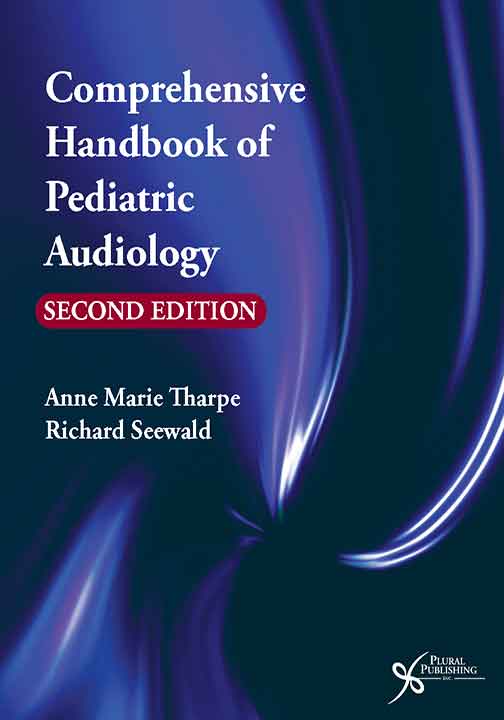
Comprehensive Handbook of Pediatric Audiology
Second Edition
Anne Marie Tharpe, Richard Seewald
Details: 1003 pages, B&W, Hardcover, 8.5" x 11"
ISBN13: 978-1-59756-615-5
© 2017 | Available
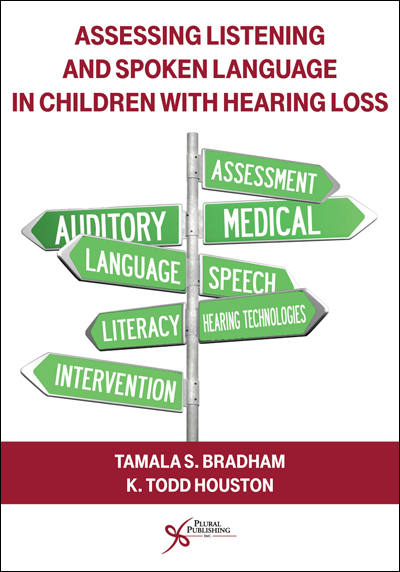
Assessing Listening and Spoken Language in Children with Hearing Loss
First Edition
Tamala S. Bradham, K. Todd Houston
Details: 496 pages, B&W, Softcover, 7" x 10"
ISBN13: 978-1-59756-576-9
© 2015 | Available
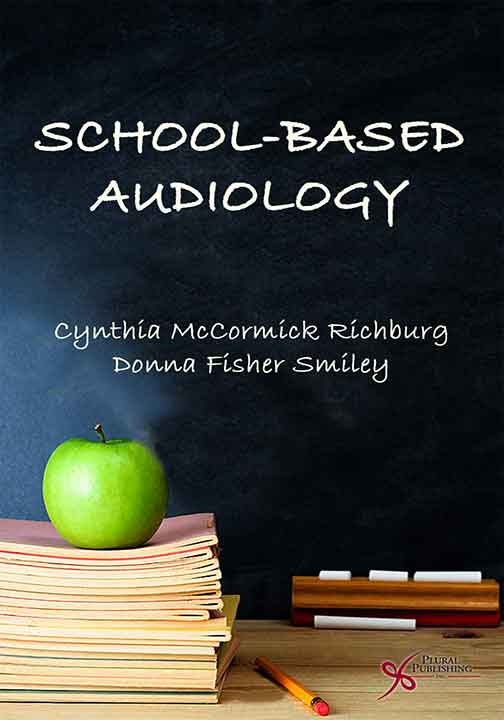
School-Based Audiology
First Edition
Cynthia McCormick Richburg, Donna Fisher Smiley
Details: 288 pages, B&W, Softcover, 7" x 10"
ISBN13: 978-1-59756-385-7
© 2012 | Available
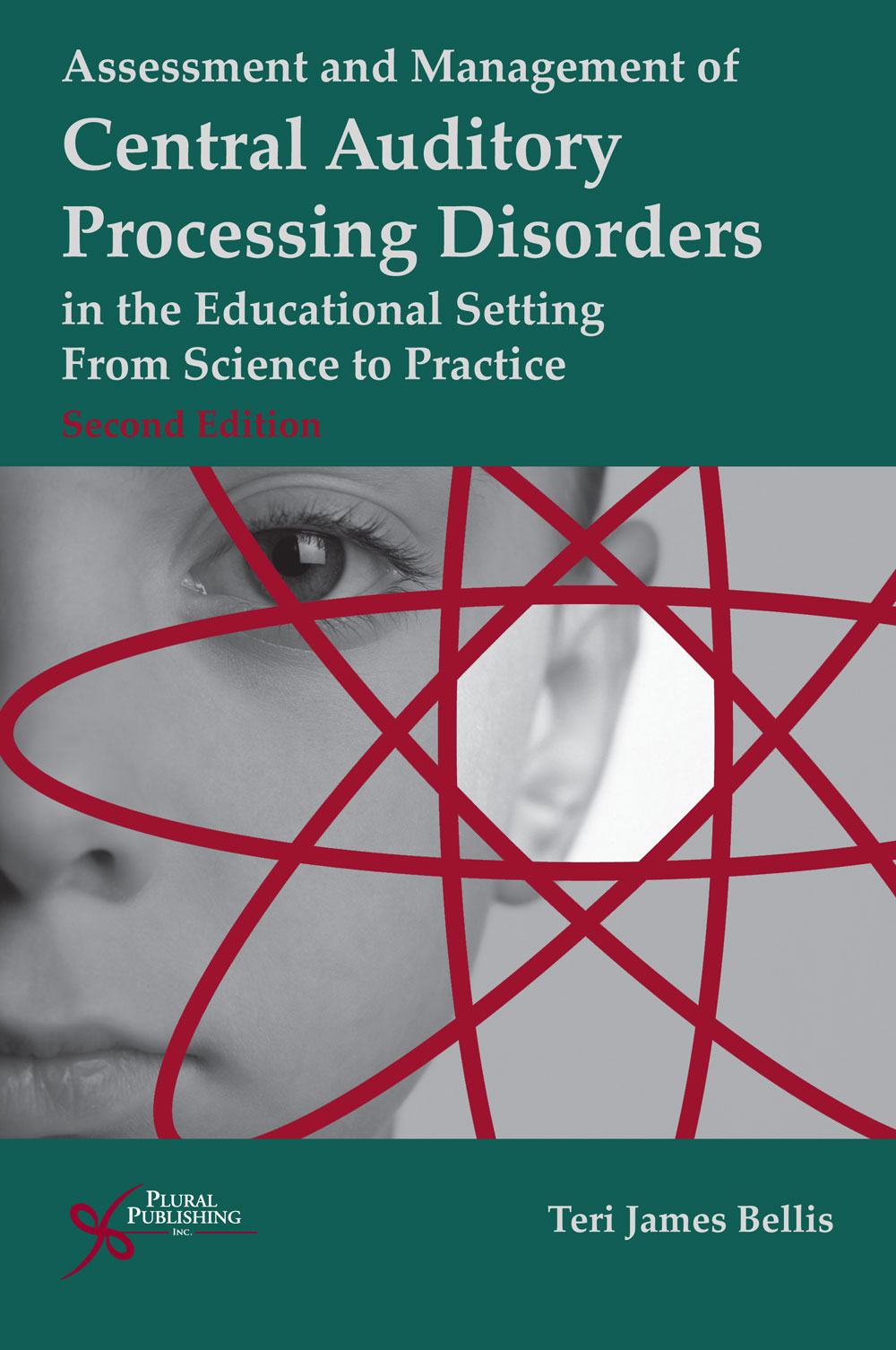
Assessment and Management of Central Auditory Processing Disorders in the Educational Setting: From Science to Practice
Second Edition
Teri James Bellis
Details: 532 pages, B&W, Softcover, 7" x 10"
ISBN13: 978-1-59756-451-9
© 2011 | Available
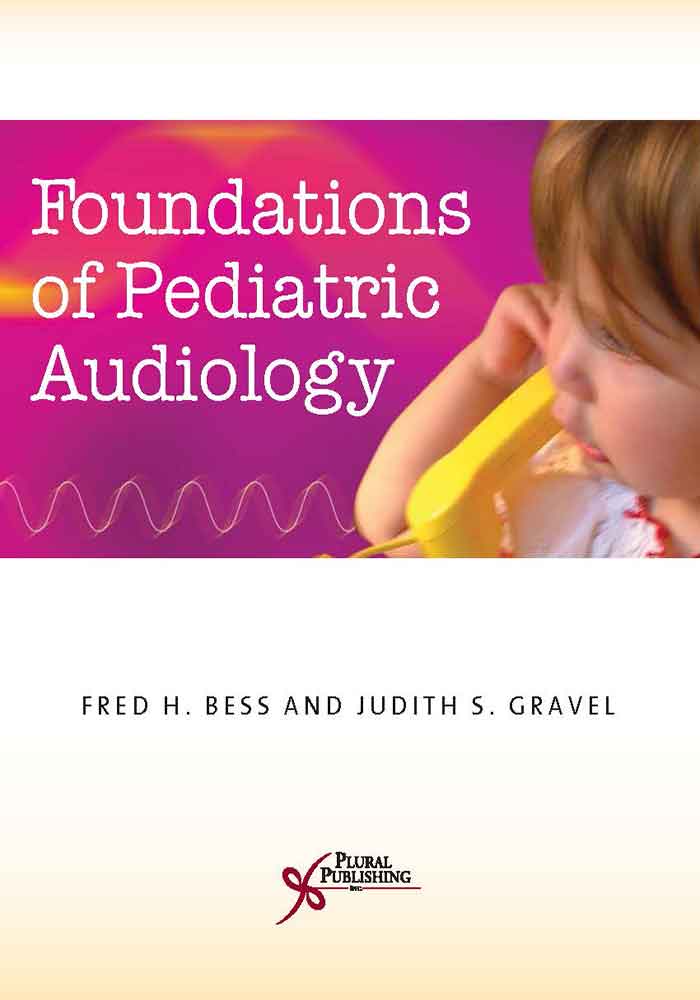
Foundations of Pediatric Audiology
First Edition
Fred H. Bess, Judith Gravel
Details: 507 pages, B&W, Softcover, 8.5" x 11"
ISBN13: 978-1-59756-108-2
© 2006 | Available
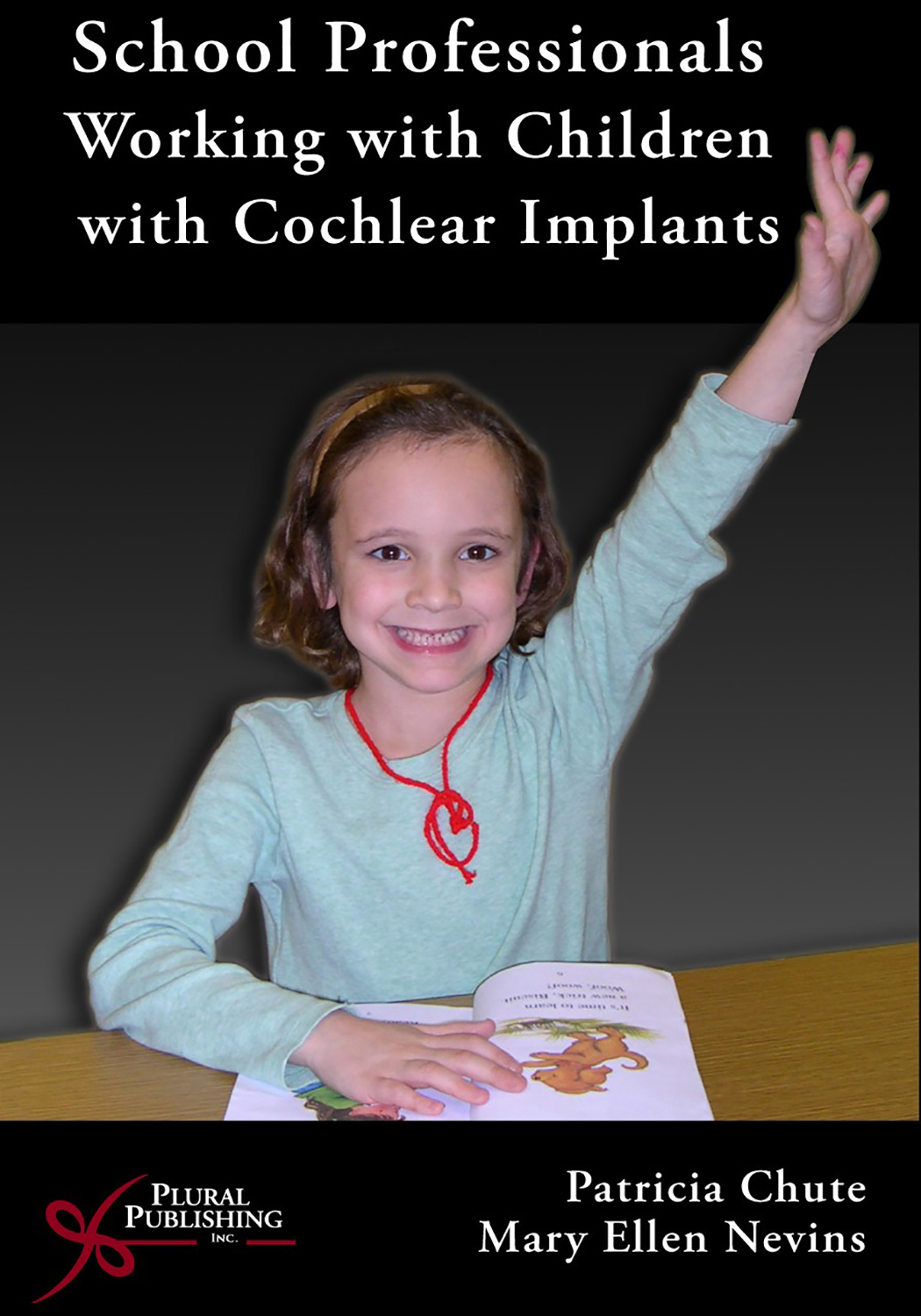
School Professionals Working with Children with Cochlear Implants
First Edition
Patricia M. Chute, Mary Ellen Nevins
Details: 239 pages, B&W, Softcover, 6" x 9"
ISBN13: 978-1-59756-013-9
© 2006 | Available
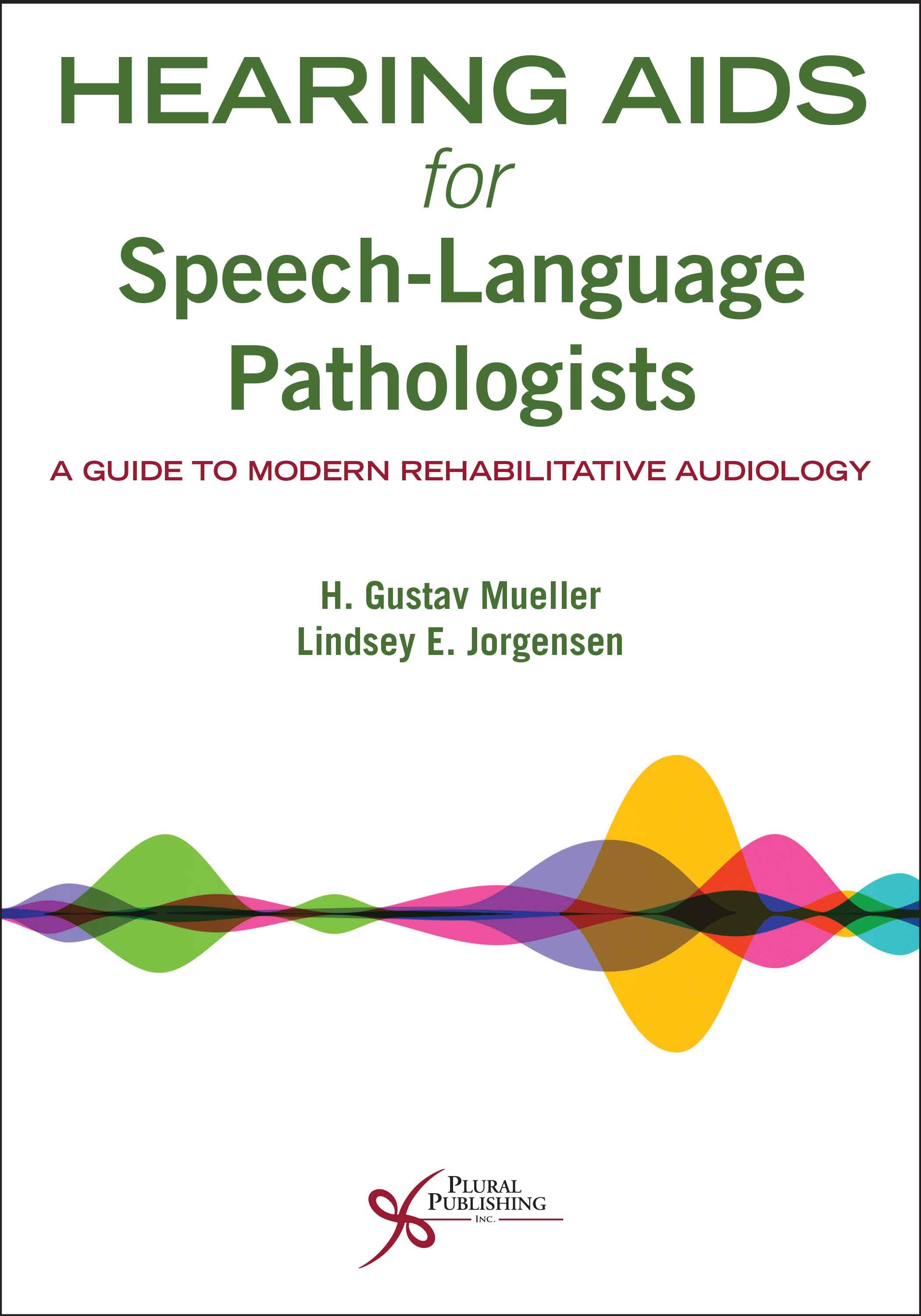
Hearing Aids for Speech-Language Pathologists: A Guide to Modern Rehabilitative Audiology
First Edition
H. Gustav Mueller, Lindsey E. Jorgensen
Details: 445 pages, B&W, Softcover, 7" x 10"
ISBN13: 978-1-63550-214-5
© 2020 | Available


